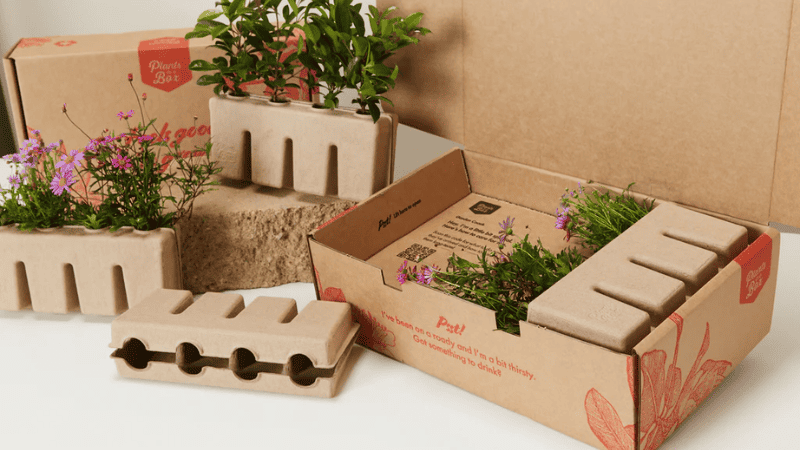
How to Ship Plants: A Guide to Sending Live Plants Safely
The online plant market is thriving, and more businesses are selling plants directly to customers. As the demand for houseplants, garden plants, and rare botanical varieties grows, ensuring safe and efficient shipping is essential. However, plant delivery requires careful preparation to keep them healthy and intact during transit. This guide will walk you through the process of preparing, packing, and shipping plants so they arrive in excellent condition.
How to Prepare Plants for Shipping
Water the Plants
Before sending a plant, it’s crucial to hydrate it properly. Water the plant thoroughly one to two days before shipping, ensuring the soil retains moisture without being soggy. For plants like succulents, minimal watering is best to prevent rot. If the plant is slightly too wet before packing, moisture-absorbing materials such as polymer crystals can help regulate dampness and prevent fungal growth.
If the journey will take longer than four days, consider using moisture-retaining materials like misted leaves or damp packing paper to help sustain hydration. Packing plants in corrugated cardboard boxes can also help maintain a balanced moisture level during transit.
Prune the Plants
Trim any wilted, damaged, or excess leaves, stems, or branches before shipping. This encourages healthy growth and minimizes damage during transportation. Any flowers or buds that are prone to wilting or breaking should be removed before shipment.
Inspect for Pests and Diseases
Before shipping, thoroughly check for pests or diseases. Treat any plant health issues beforehand to ensure only healthy plants are sent to customers. If you notice signs of infestation or disease, isolate the affected plants to prevent contamination.
Shipping plants across regions may require compliance with phytosanitary regulations. Some countries or areas have strict guidelines to prevent the spread of plant diseases and invasive species. A phytosanitary certificate may be required to verify that a plant is free from pests and meets all health standards for import and export.
Choose Proper Pots
If shipping potted plants, ensure the pot is secure and provides enough room for root expansion. Containers should be sturdy and stable to prevent shifting during transit. For plants with fragile stems or branches, use soft plant ties or rubber bands to keep them in place without causing damage.
Packing Plants for Shipping
Ensure the Plant is Ready
For bare-root plants, gently remove excess soil and trim any damaged or overly long roots with clean pruning shears. When shipping potted plants, confirm that the soil is moist but not wet, and that the soil level does not exceed the rim of the pot.
Wrap the Plant in the Right Materials
For bare-root plants, wrap the roots in damp paper towels or peat moss to retain moisture, then place them inside a plastic bag to prevent drying out.
For potted plants, keep them in their containers and wrap them in protective materials like bubble wrap or foam padding to shield them from impact. Secure delicate branches or foliage with soft plant ties to minimize movement and prevent breakage.
Securely Package the Plant
Wrap the entire plant in multiple layers of bubble wrap, newspaper, or tissue paper to cushion and protect it. Place the wrapped plant inside a sturdy cardboard box, ensuring a snug fit to prevent movement during transit. Use cable ties, packing peanuts, shredded paper, or other fillers to stabilize the plant inside the box.
Seal the package securely with strong packing tape to prevent moisture loss and ensure structural integrity during shipping.
Label Your Package
Clearly label the package as containing live plants, and indicate the correct orientation to prevent mishandling. Including care instructions with the shipment is especially useful when the plant is a gift. Some recipients may be unfamiliar with plant care, so providing simple guidelines for watering, fertilizing, and placement can help prolong the plant’s lifespan.
Tips for Shipping Plants
Research Carriers
Choose a shipping carrier that best suits your needs based on delivery speed, cost, reliability, and plant handling policies. Some carriers have specific rules regarding plant shipments, so review their guidelines to ensure compliance. Options may include standard mail services, express delivery, and specialized plant shipping services.
Balance Speed and Cost
Most live plants have a limited tolerance for being in a dark box, so choosing a shipping method that ensures delivery within two to three days is ideal. Faster shipping reduces plant stress but may be more expensive. Compare different shipping options and use price calculators to find the best balance between affordability and speed.
Choose the Right Shipping Container
Cardboard boxes are commonly used for shipping plants, but selecting the correct size and structure is crucial. If shipping multiple plants in one package, use corrugated dividers to prevent them from shifting or damaging each other. When sending fresh flowers or cuttings, consider wrapping them in plastic to maintain freshness during transit.
By following these guidelines, you can ensure that live plants reach their destination safely, maintaining their health and quality for happy customers.
